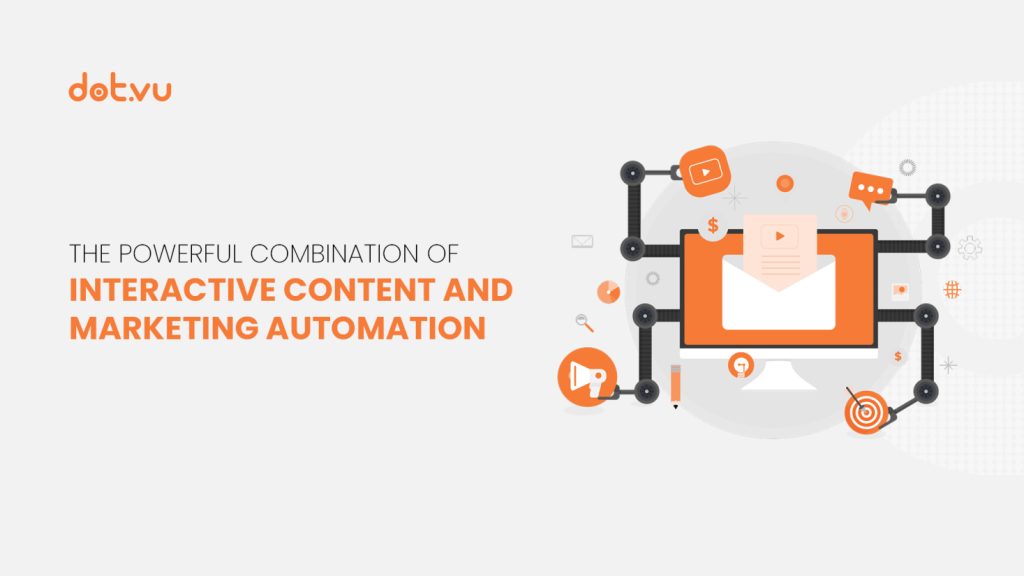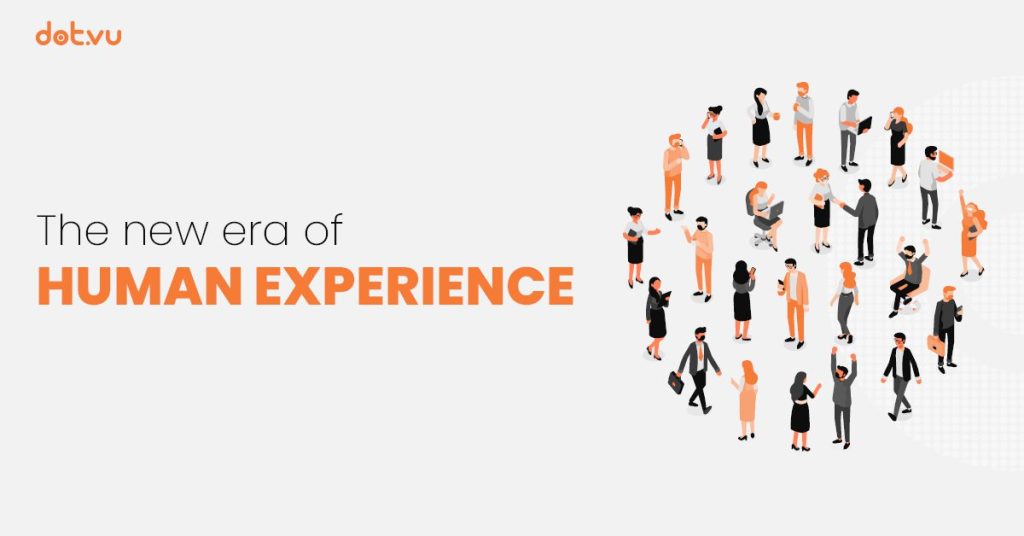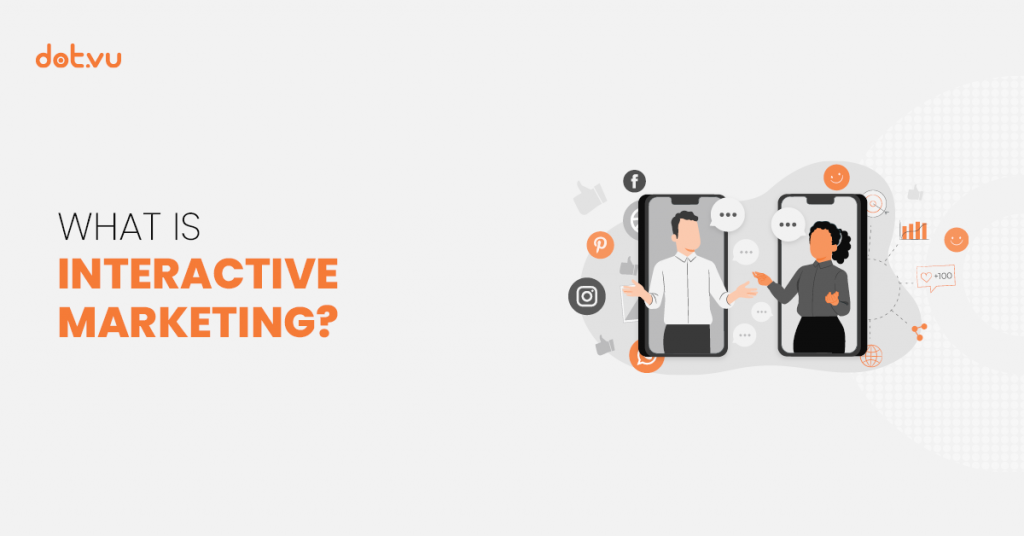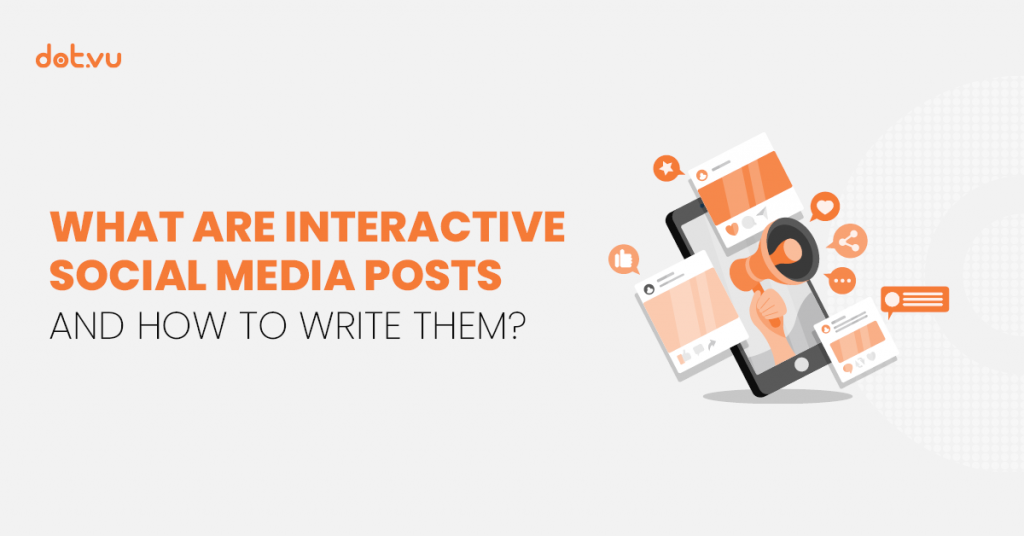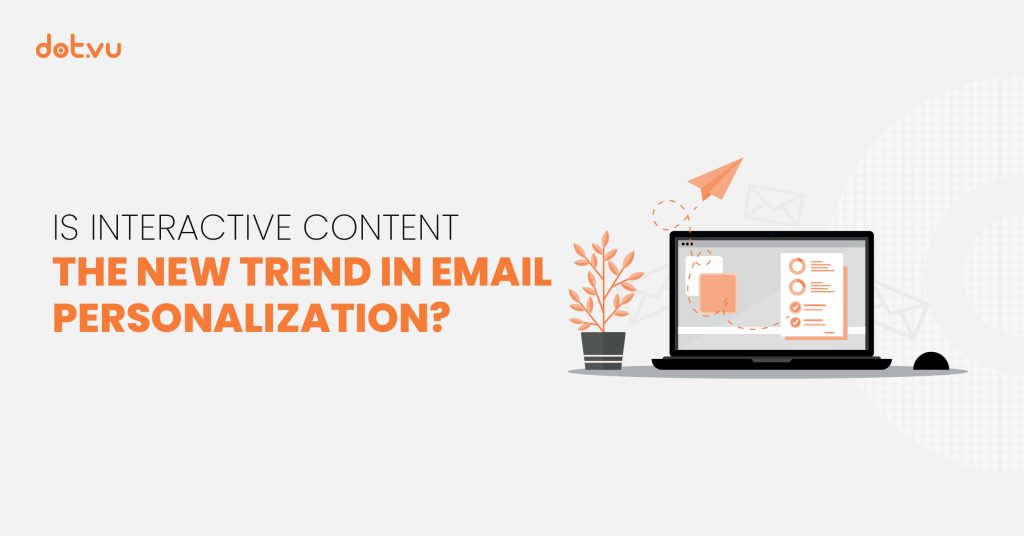
Email personalization – why is it important for your business?
Companies begin to understand the importance of personalization when looking at ways to increase customer engagement.
With the help of new technologies and software, marketers are now able to harness the power of personalization across different touchpoints, channels, and media.
First of all, personalization is all around us. From the suggested article we read on our morning commute to the series we watch before going to bed. Almost every touchpoint on the web tells us what to read, watch or click on – based on our personal needs and interests.
Among the various personalization tactics, email personalization is one of the most popular. This article explains:
- What is email personalization?
- Why is email personalization important for your business?
- How does Interactive Content empower email personalization?
- Email personalization best practices.
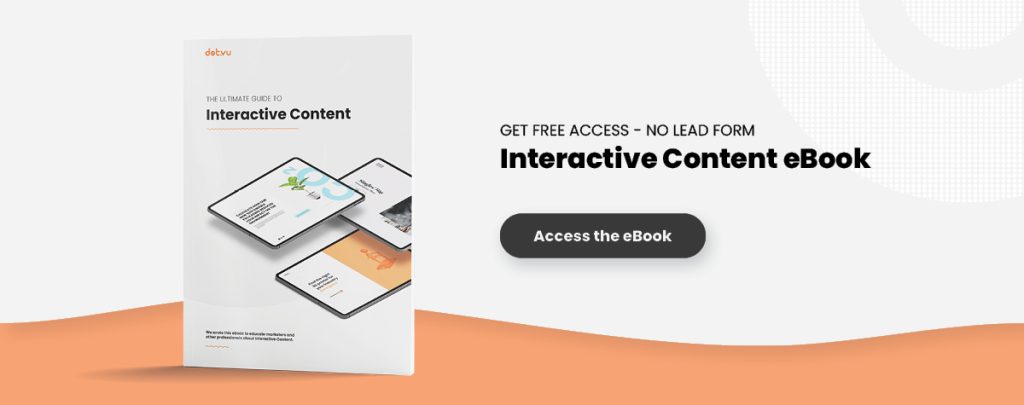
What is email personalization?
Email personalization is a marketing strategy that collects and uses personal information about the subscribers’ preferences to create targeted emails.
Imagine the following situation. Tomorrow, one of your customers receives 10 generic emails with no value and sends all of them to the trash bin. Another customer of yours receives 10 emails too, but one of them contains a discount code for the exact same product your client has been looking for! This is the essence of email personalization. It is all about addressing your subscribers directly with their names, preferences, tastes, and solutions to their problems.
You can even take things further and dive into hyper-personalization marketing.
Why email personalization?
According to a study by Experian, email personalization delivers six times higher transaction rates! Undoubtedly, email marketing is here to stay.
With so many new digital channels emerging every day, one might argue that email marketing is becoming obsolete. Don’t people prefer to communicate with brands via social media ? Well, not quite. In the US alone, more than 90% of adults use email, and surprisingly, millennials are not far behind. A whopping 62% prefer email because it’s “part of everyday life.”
No wonder email marketing is among the top marketing technology trends for 2023!
Furthermore, sending emails is still a highly lucrative way of reaching and nurturing your audience. According to McKinsey, email is 40 times more effective at acquiring customers than social media. However, most emails potential buyers receive are either ignored, unopened, or deleted.
By personalizing emails, marketers can make the message more relevant to the reader. Therefore, the emails will stand out in the inbox and attract more opens and clicks.
Let’s explore the 5 undeniable benefits of personalized emails:
1. Higher open rates
People are 26% more likely to open emails with personalized and good email subject lines. To improve the customer experience even more, you can include content that contains articles, offers, solutions, or products that suit their needs and cater to their pains.
2. Lower unsubscribe rates
Sending personalized emails eliminates the reason number one why people unsubscribe from email lists: content is irrelevant. Untargeted emails equal missed opportunities. Besides, it is better to send fewer but more targeted emails – Quality over quantity! Blasting out irrelevant content only annoys readers and prompts them to hit the dreaded “unsubscribe” button.
3. Higher deliverability rates
In terms of email deliverability, low open rates are a clear signal that your recipients do not engage with your brand or your content. In fact, lack of engagement can even lead to your campaigns being blocked. Producing more targeted emails improves your open rate & CTR – thus, positively impacting your email deliverability.
4. Better customer relationships
Personalized emails are great for humanizing the communication between your company and your newsletter subscribers. Your potential customers will feel more attached to your brand when you send messages tailored to their personalities.
5. Higher conversion rates
Higher relevance leads to higher engagement, which transitions into more sales. Marketers create segments based on needs, pains, or preferences using insightful data about the email recipients. Then, they search for the company email that is relevant to those segments, which will be outreached after data verification.”
Furthermore, they send segment-specific offers in emails. For example, a segment called, “Young Moms” might receive an email about 20% off selected kids’ onesies. However, another segment called, “Men 18-25” might receive an offer on the latest sneakers.
According to Direct Marketing Association, marketers have found a 760% increase in email revenue from segmented campaigns. Therefore, investing in your email personalization strategy can have huge payoffs.
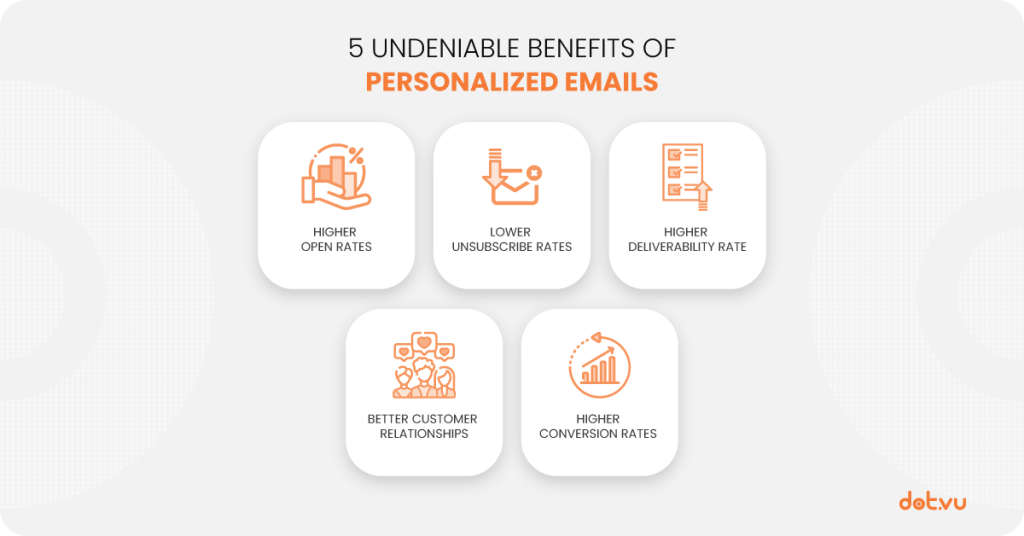
How does Interactive Content empower email personalization?
Interactive Content encourages active audience participation with the objective of engaging, entertaining, or educating about a certain topic. Common types of Interactive Content include Quizzes, Interactive Assessments, Calculators, Interactive Videos, Personality Tests, Guided Selling, Interactive Flipbooks, and Marketing Games.
You might be wondering: why Interactive Content, though? The answer lies in the name itself – interactive. It creates a personal and immersive experience.
Engaging with Interactive Content goes beyond simply reading articles or watching videos and requires choosing preferences, answering questions, assessing, voting, playing or competing with others.
Related: What is Interactive Content?
Formats like Quizzes, Personality Tests, Solution Builders, and Interactive Calculators give the user valuable personalized feedback in exchange for filling out a small lead form. First, marketers can extract the data from the form and combine it with the user’s current and future purchases and interactions to start developing a rich customer profile. Then, they collect the zero-party data through the answers visitors provide within the Interactive Experience. Finally, marketers use these reach profiles to create segments and send highly personalized emails to potential customers.
Interactive Content is the new trend in email personalization. Why? The key to a successful email personalization strategy is combining the lead generation and zero-party data capturing capabilities of Interactive Content with email marketing.
Let’s explore in more detail how Interactive Content can boost your email personalization strategy:
1. Grow email & leads lists
Lead-gen is not what it used to be 10 years ago. Back in the day, you would create a decent-looking e-book or white paper, and the leads would fly in. However, audiences have so much content to choose from today – much of which is of lower quality.
Consequently, the perceived value of traditional content like e-books has decreased. Therefore, marketers turn their views to new, alternative ways to generate leads – such as Interactive Content.
Interactive Content is typically a quick-to-consume form of content that gives the user a personalized and memorable customer experience. For example, in a Mother’s Day Personality Test, the users answer 7 simple questions about motherhood. Try this Interactive Experience yourself!
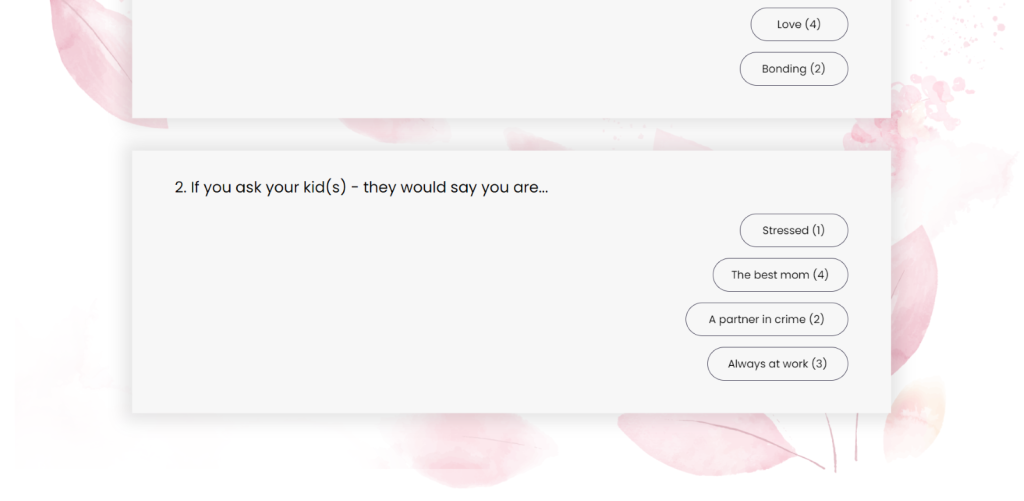
How does it capture leads? After reviewing the results, the visitors can submit their full names and emails to get 20% off their first purchase. The users who want to claim the discounts need to submit their names and emails. In this way, the marketer can capture valuable information about each user in a less-intrusive way and send personalized emails.
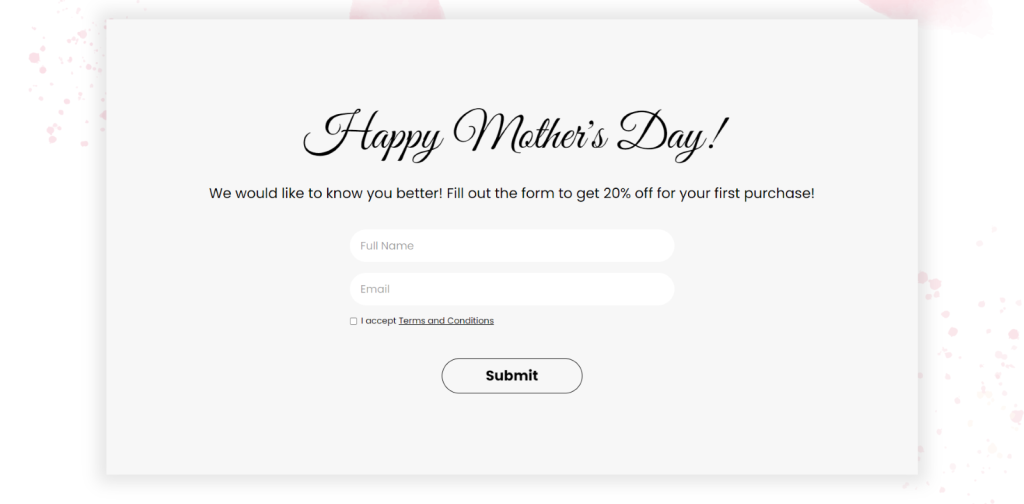
Fortunately, there are many effective ways to generate leads for your business with Interactive Content, such as unintrusive lead forms, gating sections, gating the results, and gating the entire experience.
Now that you have grown your email list, how do you get to know your potential customers better?
2. Capture rich profile data
There are loads of ways to capture data about your potential customers. The most common are web forms that users fill in exchange for some premium content. This method usually entails long lists of fields like full name, email, phone number, company name, company size, role, etc. Usually, this is the contact information that people don’t enjoy filling out – resulting in unreliable data for the marketer.
On the other hand, interactive formats ask for less information in lead forms. Instead, they capture insights from what people answer in quiz questions, calculator responses, or navigations in Interactive Videos. Within these answers, marketers find information about the individual’s needs, preferences, or business challenges.
Using Interactive Content platforms like the one on Dot.vu, you can capture information about every interaction the user makes. These could be clicks on CTA buttons, content completion rates, answer to questions, or data entry in web forms.
Your users become trackable contacts when filling out an opt-in or lead-gen form on any of your Interactive Experiences. Afterward, their past and future interactions with your content are logged under their contact profile.
The example below is an IT Assessment Test that helps business assess their IT operations and find the best solution to their issues.
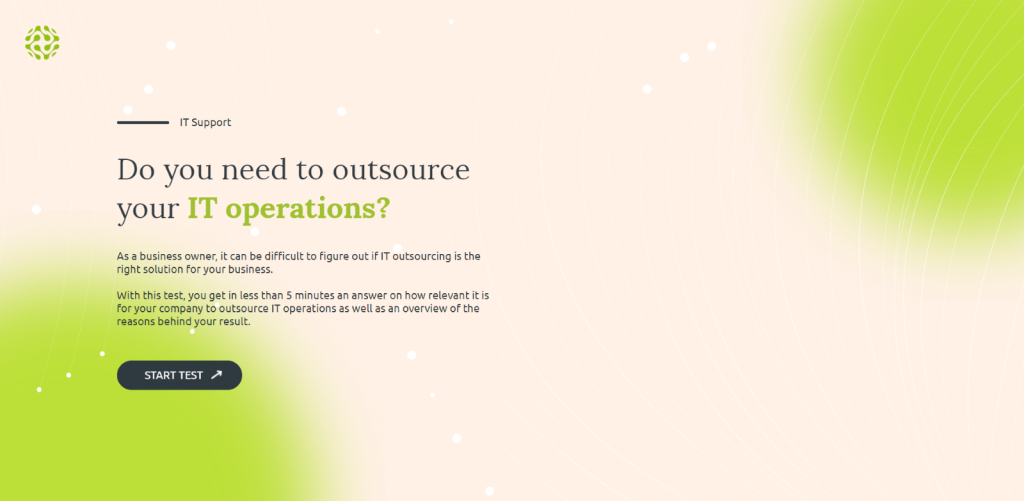
As your visitors answer the questions, you will find out the following:
- What are the challenges in their organization?
- How old is the IT infrastructure in their company?
- How important is it for them to reduce their IT expenses?
- Do they measure the budget of their IT-related costs?
- Is the organization on a growth path?
- What is their IT services overview?
- What are the competencies of their IT staff?
Each answer helps you draw a clearer picture of your potential customers and their biggest pains. Therefore, you would be able to craft more tailored emails with solutions to their issues.
For example, you might discover a segment that faces many difficulties related to its IT operations. Then, you can produce an email addressing their problems, along with a viable solution.
3. Create smart segments
Let’s look at the Mother’s Day Personality Test example once more. The user answers 7 fun questions, sees the results, and then fills out a short form. The result is 1 of 4 possible mom personality types. Instead of using an 8-field lead form, this Personality Test asks only for 2 pieces of information (name and email). Marketers extract other crucial information from the user’s quiz answers. For example, they discover what the struggles of modern moms are.
The 4 personality types are as follows: the perfectionist mom, the complete mom, the working mom, and the best friend mom. Based on their personality type, quiz takers are positioned into one of 4 segments in an email marketing platform. Each user receives an email based on their personality type. An email personalization strategy like this is great addition to your Mother’s Day campaigns.
Email personalization best practices
1. A clear email personalization strategy
Identify what kind of Interactive Content would work for your audience and what kind of data you want to capture. For example, if you want to collect valuable insights about your private consumers, a Quiz, a Personality Test, or a Guided Selling experience would help you out. On the other hand, an Interactive Calculator, an Interactive Assessment, or a B2B Product Recommender might be the best formats to capture data about your business clients.
Furthermore, you need to create your experience based on the information you want to collect. Selecting the right questions is crucial to a successful email personalization strategy.
Last, but not least, you need to be aware of the products you want to promote with your emails. Then, attaching the product specifications to every segment will make it easier for you to craft the targeted emails.
2. Data collection through an Interactive Content marketing platform (like Dot.vu)
Selecting the right Interactive Content marketing platform for your requirements is crucial. Make sure to opt for a solution that creates experiences that align with your strategy.
Dot.vu offers a large variety of Interactive Experiences templates that allow you to collect valuable customer insights. You can find hundreds of templates on our marketplace. Explore your opportunities!
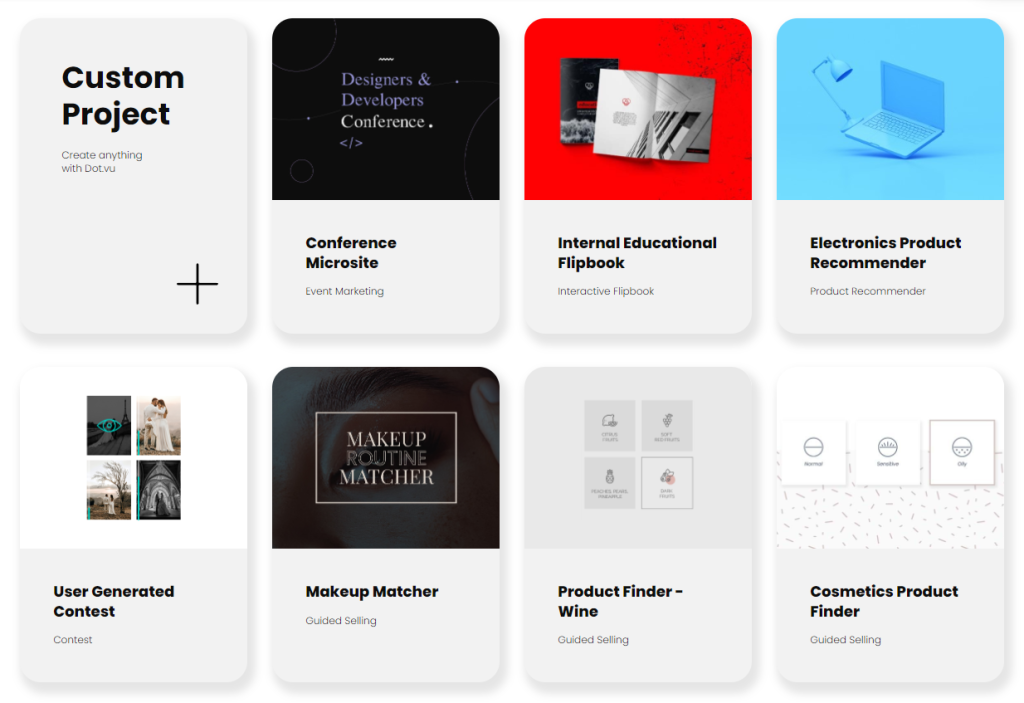
3. Unintrusive lead forms
Create short and unintrusive lead forms to encourage more people to share their emails. As you can easily track your audience’s behavior within the Interactive Content experience, you don’t need to ask more than a name and an email address.
The placement of the lead forms is also very important. In some cases, it makes sense to lock the entire experience. For example, a highly valuable eBook might be suitable for this purpose. On the other hand, gating the results of a quiz is better than gating the entire experience. Read our blog post about the gated content best practices to learn how to do it right.
4. Save time and energy with an email marketing software
A great email marketing software can help you save lots of time and energy. For example, Sender is ideal as it has a combination of email marketing and email automation, which can ease your work by having everything in one location. By creating automated workflows, it can simplify your work while raking in engagements and conversions for you. Automated emails have the potential to increase conversions up to 2,270%!
You can integrate the information you collect from your lead forms and seamlessly save the leads by segments in your sales funnel. Plus, there are various tools that can help improve your conversion rate, such as automated email campaigns that can be perfectly timed and personalized according to your target audience.
5. Send relevant product recommendations
A well-crafted targeted email must be relevant to your target audience. How do you achieve that? It is pretty simple. What you need to do is to send product recommendations that match the season and your subscribers’ preferences. For example, you can use a Guided Selling experience to discover what clothes your customers look for. Then, during your summer marketing campaign, you can send a personalized email highlighting your newest fashion collections corresponding to the subscribers’ needs. Some potential buyers will receive offers for dresses, while others will receive discounts for sandals.
Get started with email optimization
Combining two technologies – Interactive Content Marketing software and email marketing software to target individual needs is the key to a successful email personalization strategy. Use Interactive Content like Quizzes, Interactive Assessments, Interactive Videos, or Personality Tests to capture leads and segmentation data. Then, automate targeted emails per segment.
Click the button below to explore and try our Interactive Content templates!
